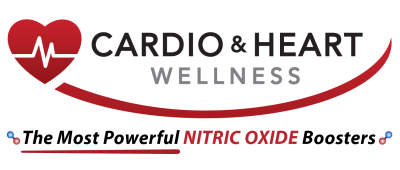L-Arginine Helps with Cognition and Memory
Arginine is one of the most versatile semi-essential amino acids. Further to the primary role in protein biosynthesis, arginine is involved in the urea cycle, and it is a precursor of nitric oxide. Arginine deficiency is associated with neurodegenerative diseases such as Parkinson’s, Huntington’s and Alzheimer’s diseases (AD). In this study, we administer arginine intracerebroventricularly in a murine model of AD and evaluate cognitive functions in a set of behavioral tests. In addition, the effect of arginine on synaptic plasticity was tested electrophysiologically by assessment of the hippocampal long-term potentiation (LTP). The effect of arginine on β amyloidosis was tested immunohistochemically. A role of arginine in the prevention of cytotoxicity and apoptosis was evaluated in vitro on PC-12 cells. The results indicate that intracerebroventricular administration of arginine improves spatial memory acquisition in 3xTg-AD mice, however, without significantly reducing intraneuronal β amyloidosis. Arginine shows little or no impact on LTP and does not rescue LTP deterioration induced by Aβ. Nevertheless, arginine possesses neuroprotective and antiapoptotic properties.
L-arginine and Alzheimer’s disease
Alzheimer’s disease (AD), the most common form of dementia, is characterized by progressive neurodegeneration and loss of cognitive and memory functions. Although the exact causes of AD are still unclear, evidence suggests that atherosclerosis, redox stress, inflammation, neurotransmitter dysregulation, and impaired brain energy metabolism may all be associated with AD pathogenesis. Herein, we explore a possible role for L-arginine (L-arg) in AD, taking into consideration known functions for L-arg in atherosclerosis, redox stress and the inflammatory process, regulation of synaptic plasticity and neurogenesis, and modulation of glucose metabolism and insulin activity. L-arg, a precursor of nitric oxide and polyamine, exhibits multiple functions in human health and may play a prominent role in age-related degenerative diseases such as AD.
More than 6 million U.S. adults have Alzheimer’s disease. By 2050, this number is expected to increase to nearly 13 million. 54,000,000 adults are 65 years old or older and 6,000,000 have Alzheimer’s. Your chances are I in 10 of getting it. Despite its growing prevalence, there is no known cure for Alzheimer’s disease and conventional treatments are lacking.(1)
Researchers with the Cleveland Clinic analyzed 1,600 approved drugs in the hopes that one of them could be repurposed as an Alzheimer’s treatment. The erectile dysfunction drug Viagra (sildenafil) turned out to be surprisingly effective. Usage reduced the risk of Alzheimer’s disease by 69%, while increasing neurite growth and reducing levels of toxic tau proteins. (3) Most studies are exceptional with just 10% success. They brag about a 10% success with cancer. Well, Hello, this is 69%.
Commentary by Dr Rainer Boger MD, researcher and scientist and Professor of Medicine
There are many ways to improve Nitric Oxide Production. The question always is, what is the best program and system? Yes, you can get Nitric Oxide from vegetables and animal protein and many other foods. We have demonstrated the foods with the most production of Nitric oxide, and the cost, and the foods are complicated to achieve results. Out of 500 companies selling arginine nutraceuticals and arginine from red beets or red beet powder, your probability to achieve 24 hours per day production of Nitric oxide strong enough to address Alzheimer’s is zero. And if you could eat enough food, you would consume a lot of calories and must devote a huge amount of time and money for marginal results. I have formulated over 30 years the answer to the issue. The products from Cardio and Heart Wellness are the only products to meet the test and exceed it. Also making Nitric Oxide is only part of the picture. The 3rd generation products will treat many health conditions and reverse cardiovascular and heart disease. They also will treat aging and the many health issues associated with aging as well as Alzheimer’s. The results of this study are fantastic. With a 69% reduction rate with Nitric Oxide, that changes the odds to 1 in 78 versus 1 in 10.


